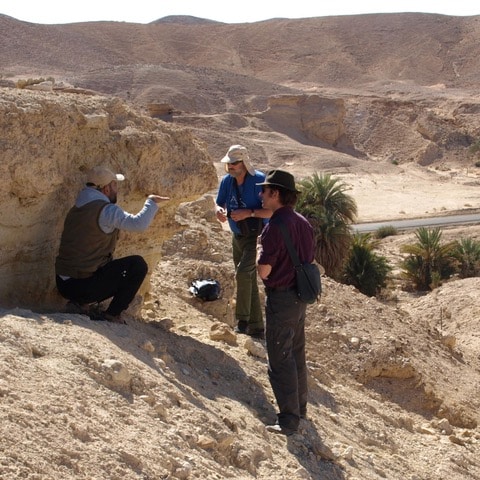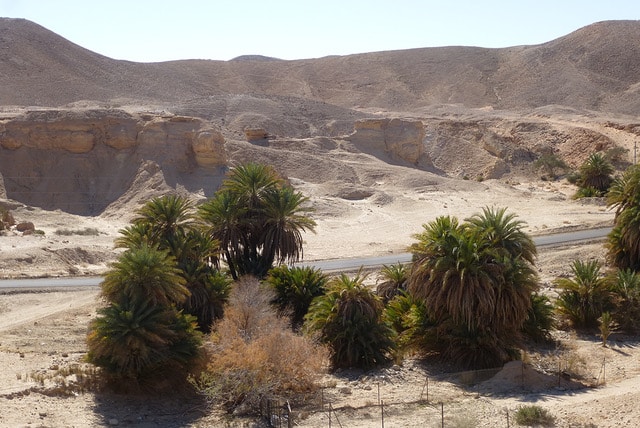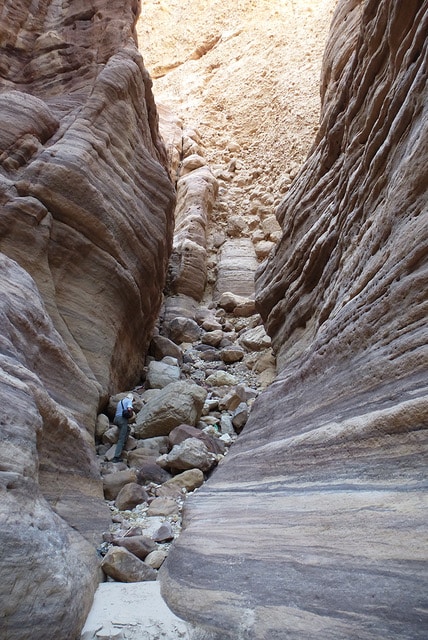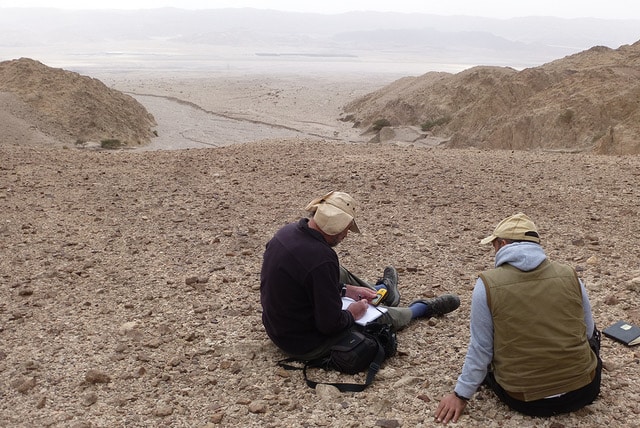A new paper out in Science Advances refines the picture of how and when humans (Homo sapiens) migrated out of Africa into Eurasia during the last hundred thousand years. GFÚ researcher, Dr John Jansen, is one of the international team led by his former PhD student, Dr Mahmoud Abbas.
Our species, Homo sapiens, evolved in Africa over the past 200–300 thousand years and dispersed into Eurasia multiple times. The key migration route is thought to have been across northeastern Africa into the Levant and the Jordan Rift Valley, in particular. This study documents and dates stone artefacts discovered in wetland sediments within three desert wadis draining to the Jordan Rift Valley. Luminescence dating reveals an age of 84 ± 5 thousand years ago for the human occupation. These results support the idea of a well-watered Jordan valley that funnelled people into western Asia and northern Arabia during the last glacial cycle.
Photos from the Jordan Valley field sites:
Mahmoud Abbas, Paul Carling and John Jansen (from left to right) sampling a section at Wadi Gharandal where a stratified Levallois flake is constrained with OSL (optically stimulated luminescence) to 84 ± 5 ka.
Wadi Gharandal: Phoenix trees growing in groundwater springs, with eroded remnants of swamp sediments in the background.
Wadi Inmira: A deeply incised bedrock slot canyon topped by the ancient lake sediments of the Dead Sea above.
Wadi Mukhtadi: On a high terrace covered with desert gravel pavement above the Wadi Mukhtadi fan and the Jordan Rift Valley beyond.
Research article: Mahmoud Abbas et al., Human dispersals out of Africa via the Levant. Sci. Adv. 9, eadi6838 (2023). DOI: 10.1126/sciadv.adi6838





